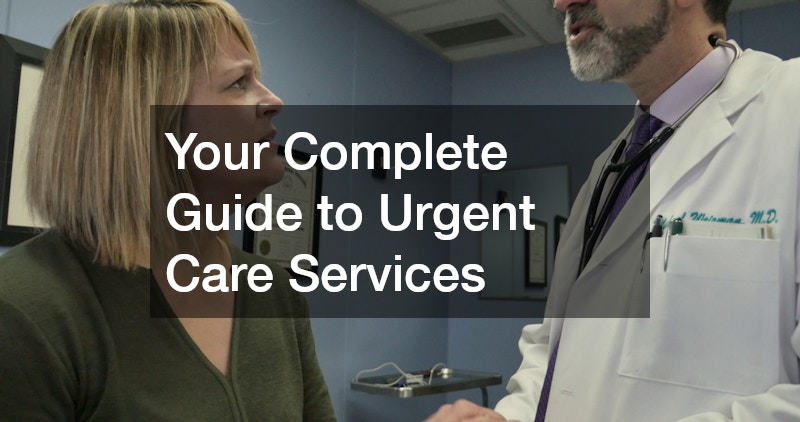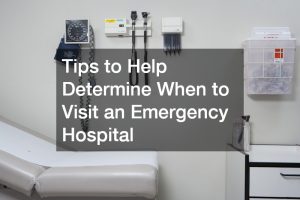
In today’s fast-paced world, urgent care centers have become a vital resource for individuals seeking immediate medical attention. This guide provides an exhaustive overview of urgent care services – what they are, when to visit them, and how they compare with other medical facilities. Below are the top questions people ask about urgent care services.
Common Illnesses and Injuries
Urgent care centers are well-equipped to handle a variety of common illnesses and minor injuries, providing a convenient alternative to traditional doctor’s offices. Patients can visit urgent care for conditions such as minor fractures, sprains, respiratory infections, and ear infections. In many cases, urgent care centers offer an invaluable service by treating these conditions quickly and effectively without an appointment.
These facilities are especially beneficial for patients experiencing symptoms of the flu, common colds, or even mild cases of food poisoning. By having access to onsite diagnostic tools such as X-rays and laboratory tests, urgent care centers can rapidly diagnose and treat these everyday ailments. Overall, they provide an essential solution by bridging the gap between primary care and emergency treatment in a timely manner,
Limitations of Urgent Care
While urgent care centers provide substantial benefits, they do have limitations regarding the severity of conditions they can manage. Life-threatening emergencies, complex surgical procedures, and critical care situations necessitate specialized treatment that urgent care centers are not equipped to deliver. For instance, urgent care facilities lack the comprehensive resources to perform complex imaging, such as MRIs, or manage severe trauma cases.
Patients with chronic health conditions or those requiring specialty care may find urgent care services inadequate. It is essential for individuals to recognize when their medical needs exceed what urgent care can offer and seek alternative healthcare solutions when appropriate. This recognition ensures patients receive the level of care their condition demands and prevents delay in treatment for serious conditions.
Identifying Urgent Medical Needs
For many, determining when to visit urgent care can be pivotal in addressing sudden health concerns efficiently. Urgent care facilities are designed to manage non-life-threatening issues that require prompt attention, such as minor cuts, allergic reactions, or urinary tract infections. Understanding the scope of services provided can help patients decide whether urgent care is the appropriate choice for their symptoms.
A key factor in making this decision lies in assessing the severity and immediacy of the condition. If a situation does not warrant a full-scale emergency response but still necessitates timely intervention, urgent care can be an optimal choice. Knowing when to seek urgent care also contributes to lessening the patient burden on emergency facilities and reduces unnecessary expenses.
Cost and Insurance Implications
Financial considerations often influence the choice between urgent care and other healthcare services. Cost-effectiveness is a significant advantage of urgent care centers, especially for patients seeking quality care at a lower price compared to emergency rooms. On average, urgent care visits tend to be significantly less expensive than emergency room visits, mainly due to the reduced scope of services and operational costs.
Insurance policies frequently impact how patients choose to receive care, with many plans covering urgent care visits under routine medical expenses. Patients should be aware of their insurance benefits to maximize savings and ensure they are leveraging their healthcare options effectively. The ability of urgent care to reduce overall medical expenditures highlights its role in providing affordable care solutions.
Operational Hours and Accessibility
Urgent care centers are known for their flexible operational hours, offering a reliable healthcare option outside the standard 9-to-5 schedule. Typically open seven days a week, including evenings and weekends, urgent care facilities provide accessibility when other medical offices may be closed. This availability is crucial for patients seeking immediate care for non-emergency situations that arise after-hours.
Accessibility further extends to the location of urgent care centers, often strategically placed in easily reachable areas to serve community needs. These centers aim to bridge the gap between patients and essential medical services, offering care in convenient locations near homes and workplaces. The combination of extended hours and strategic locations enhances overall healthcare accessibility, particularly in under-served areas.
Technology and Facilities
Technological advancements play a significant role in the operations of urgent care centers, equipping them with essential tools for patient care. Many centers feature on-site laboratory services and X-ray facilities, allowing for rapid diagnostics and tailored treatment plans. This technology-driven approach enhances patient outcomes through prompt attention to their medical needs.
Urgent care centers play a crucial role in the healthcare system by providing accessible and efficient care for non-life-threatening conditions. By understanding what services they offer, when to utilize them, and how they operate, you can make informed decisions about your healthcare needs. Whether it’s for a sudden illness, minor injury, or timely medical advice, urgent care centers offer a valuable service that complements the broader healthcare infrastructure.


